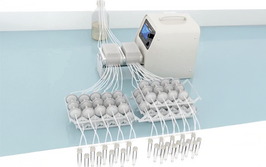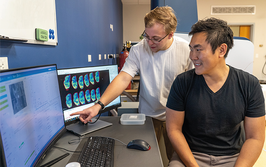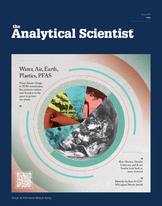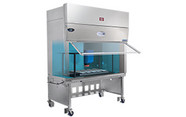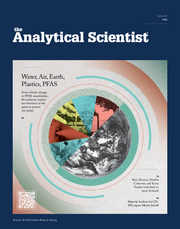Simplicity for Sustainable Sample Preparation
Implementing changes to sample preparation may seem difficult for most analytical processes, but with simple adjustments to microextraction units, extractant phases and tools for analysis, achieving sustainability may not be as complicated as it first seems
Soledad Cárdenas | | 5 min read | Opinion

Sample preparation has a reputation as being challenging, especially where sustainability is concerned, and best done away with if at all possible – "the best sample preparation is no sample preparation," the saying goes. I understand the sentiment, but there’s no getting away from the fact that sample prep is crucial to ensure we obtain accurate results based on an analytical procedure with high sensitivity, selectivity, and precision; getting rid of it usually isn’t an option. So, I’d like to propose a more realistic saying: "the best sample preparation is the simplest sample preparation."
Keeping things simple is the best way to be sustainable, as the concept of simplicity inherently includes aspects such as reducing resource and energy usage, shortening analysis time, and minimizing sample preparation. Implementing these aspects inevitably reduces the sources of error in the final result, and with this we can adequately answer the question “what should the sample preparation stage look like today?”, whilst maintaining high analytical standards for the quality of the information provided.
Simplicity in the design of the extractant media (or microextraction units), versatility of the extractant phases (to achieve “all-in-one” extraction), and clarity during instrumental measurement are the three main goals of simple sample preparation. A literature survey of new sample preparation approaches permits us to identify these trends.
Let’s think about the more recently described (micro)extraction units. The evolution of sample treatment has normalized the introduction of common, affordable and sustainable elements in the analytical process. By way of example, natural materials such as cellulose paper, cotton, wood, and cork have been used as extractant media or to support a liquid or solid phase that constitutes the central element of the sample pretreatment step (usually in the form of a thin layer).
However, it’s also possible to use alternative materials such as adhesive tapes, needles or even vials, all considered commonplace in a laboratory. In these three examples, the sorbent material can be placed in different forms. For example, adhesive tapes are ideal for the immobilization of particulate material on their surface, as you can simply place the adhesive tape in a vial containing the solid material. The main advantage to this option is that the dimensions and geometry of the area upon which the sorbent is to be deposited can be selected without exposing that section of the sticky material.
Needles are commonplace in laboratories too, as previously mentioned, and can also be converted into microextraction units. A benefit to using them is their versatility, as the sorbent phase may be deposited as either a thin film on the inner walls of the needle or packed into the Luer connector. It is recognized that the latter of these options reduces the amount of solid that can be used (to the range of a few milligrams). However, the flow of the sample through the Luer is more efficient in the analyte retention process than passing the sample along the needle. To increase efficiency, needles of a larger gauge can be used to allow the solid to be placed in the lower part of the needle as opposed to the Luer connection, increasing the amount of sorbent material available for analyte retention by a factor of ca. 4.
The last example takes advantage of the easy activation of the inner walls of a glass vial to grow a thin layer of sorbent material over its surface. This allows the implementation of all typical solid-phase extraction steps in the same unit, thus avoiding cross-contamination between samples. This, along with the other examples, demonstrate how simplifying the sample preparation step can innovate how microextraction units are prepared.
Nevertheless, the use of natural extractant phases/supports, affordable commercial elements and syntheses following straightforward approaches are not the only factors to consider with regards to simplicity in sample preparation. The versatility of the aforementioned microextraction devices make them capable of interacting with analytes of differing chemical properties (e.g., wide polarity range), due mainly to the use of extractant phases. In this way, generic sample preparation permits multi-targeted extraction by using one-step extraction of the compounds from the sample matrix.
An excellent alternative is to use either liquid or solid extractant phases, with different interaction domains within their structure. The possibility of using high resolution instruments such as mass spectrometers should be considered as a genuine alternative, to maximize how much information can be extracted during analysis. Since the direct analysis of samples is prevented by multiple factors – such as ion suppression due to interference – it's exciting to have sample preparation procedures that allow the extraction of the largest number of compounds in a single step. This way, even if standards aren’t in place for their identification, vendors’ programs, home-made libraries, and different data acquisition modes would allow an expansion of the total compounds identified in a single extraction step (following well-established identification criteria).
The final trend in simple sample preparation is the possibility of coupling the process directly with that of instrumental analysis. The incorporation of suitable interfaces, which eliminate the need for chromatographic separation, is valuable due to the additional time saved. In fact, many novel devices are designed to achieve this in combination with ambient mass spectrometric detectors. This has given birth to new techniques such as substrate spray mass spectrometry or needle-based mass spectrometry, with their use depending on the device used for sample treatment.
Simple sample preparation necessitates daily work with an open mind and creativity with the elements we commonly have to hand. But the rewards – contributing to the sustainability and affordability of the amazing activities we perform as analytical chemists – are certainly worth it.
Affordable and Sustainable Sample Preparation (AS2P) Research Group, Analytical Chemistry Department, Instituto Químico para la Energía y el Medioambiente (IQUEMA), University of Córdoba, Campus of Rabanales, Marie Curie Building, E-14071 Córdoba, Spain.

